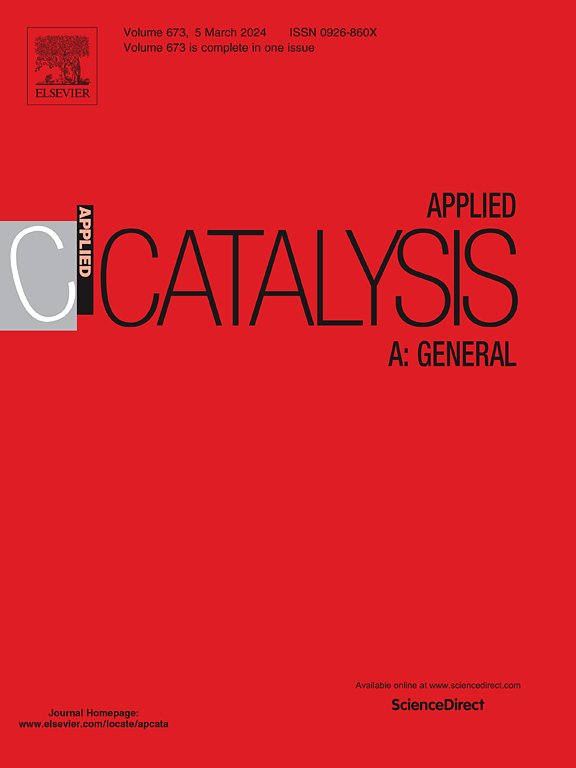Charge separation engineering: The synergistic effect of oxidation half-reaction and reduction half-reaction to promote photocatalytic hydrogen production
IF 4.8
2区 化学
Q2 CHEMISTRY, PHYSICAL
引用次数: 0
Abstract
With a view to effectively promote the spatial separation ability of photogenerated carriers, designing photocatalysts and photocatalytic systems with high-efficient charge separation ability is an effective strategy to solve the problem of low carrier separation efficiency in the light-induced process. The composite photocatalyst UPC-HOF-6/Mn2O3/Pt with high-efficient charge separation ability is designed by anchoring Mn2O3 with oxidation ability and Pt with reduction ability to the oxidation site and reduction site respectively, achieving the rapid separation of photogenerated electron-hole pairs. Through the analysis of electron paramagnetic resonance technology, the charge transfer direction of the composite photocatalyst under light irradiation is clarified. The hydrogen evolution activity of the optimized composite photocatalyst UPC-HOF-6/Mn2O3/Pt is 6574.9 μmol·g−1, which is 6574.9 times and 206.9 times that of UPC-HOF-6 (0 μmol g−1) and Mn2O3 (31.7 μmol g−1) respectively, showing excellent photocatalytic activity. The realization of the rapid separation of photogenerated electron-hole pairs by designing photocatalysts with high-efficient charge separation ability lays a theoretical foundation for improving the spatial separation ability of photogenerated carriers.
电荷分离工程:氧化半反应和还原半反应的协同作用促进光催化制氢
为了有效提升光生载流子的空间分离能力,设计具有高效电荷分离能力的光催化剂和光催化体系是解决光诱导过程中载流子分离效率低问题的有效策略。通过将具有氧化能力的Mn2O3和具有还原能力的Pt分别锚定在氧化位点和还原位点上,设计了具有高效电荷分离能力的复合光催化剂UPC-HOF-6/Mn2O3/Pt,实现了光生电子-空穴对的快速分离。通过对电子顺磁共振技术的分析,明确了复合光催化剂在光照射下的电荷转移方向。优化后的复合光催化剂UPC-HOF-6/Mn2O3/Pt的析氢活性为6574.9 μmol·g−1,分别是UPC-HOF-6 (0 μmol g−1)和Mn2O3 (31.7 μmol g−1)的6574.9和206.9倍,表现出优异的光催化活性。通过设计具有高效电荷分离能力的光催化剂实现光生电子-空穴对的快速分离,为提高光生载流子的空间分离能力奠定了理论基础。
本文章由计算机程序翻译,如有差异,请以英文原文为准。
求助全文
约1分钟内获得全文
求助全文
来源期刊

Applied Catalysis A: General
化学-环境科学
CiteScore
9.00
自引率
5.50%
发文量
415
审稿时长
24 days
期刊介绍:
Applied Catalysis A: General publishes original papers on all aspects of catalysis of basic and practical interest to chemical scientists in both industrial and academic fields, with an emphasis onnew understanding of catalysts and catalytic reactions, new catalytic materials, new techniques, and new processes, especially those that have potential practical implications.
Papers that report results of a thorough study or optimization of systems or processes that are well understood, widely studied, or minor variations of known ones are discouraged. Authors should include statements in a separate section "Justification for Publication" of how the manuscript fits the scope of the journal in the cover letter to the editors. Submissions without such justification will be rejected without review.
 求助内容:
求助内容: 应助结果提醒方式:
应助结果提醒方式:


